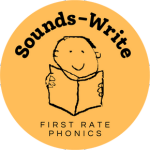In this post, Sounds-Write’s Founder and CEO John Walker examines the structure of the Phonics Screening Check 2025, highlights patterns and potential points of confusion, and offers guidance on how teachers can use this insight to better support early readers. You can also listen to a version of this post as a podcast:
Thirteen years on and after much initial opposition, English schools have just run the latest iteration of the Phonics Screening Check. So taken for granted is it these days that there is hardly a murmur raised in opposition. In fact, the format of the Check is now also one of England’s best exports, both officially and unofficially. South Australia adopted the Check in 2017 and other states in Australia have already adopted the format or are busy mulling over whether to implement it, as we have done here.
Described as a ‘light touch’ assessment of reading by the Department for Education, it is exactly that. It is an early screener to check that children are not going unnoticed by falling through the cracks. All the evidence suggests that students who don’t get off to a good start are in danger of failing to keep up with the requirements of the curriculum
By the end of Year 1, all students in England have to take the Check and pass the threshold set for the assessment of 32 correct responses to 40 items. Of those 40 items, 20 words are non-words and 20 are real.
As was the case last year, this year exactly 20 (half) of the words in the Phonics Screening Check 2025 were made up of Initial Code sound-spelling correspondences (SSCs) in the Sounds-Write sequence: 15 in Section 1 and 5 in Section 2, making 20 in all. 20 of the remaining words were made up of more complex Extended Code SSCs, as well as the customary four polysyllabic words: 5 in Section 1, 11 in Section 2 and 4 in the polysyllabic word section.
The Check has now settled into a fairly predictable format and, as was the case last year, the developers have clearly understood the need to test children’s ability to to read words containing adjacent consonants or consonant clusters. In fact, no fewer than 24 of the 40 words contained consonant clusters.
In all, there were 11 CVC and 2 CV words to read.
The CVC words were:
In Section 1: ‘dup’, ‘hib’, ‘yech’, ‘loip’, ‘chuss’, ‘sell’, ‘form’, ‘shark’ : 5 were Initial Code words; 3 were Extended Code words.
In Section 2: there were four CVC WORDS: ‘virp’, ‘boom’, ‘phope’ and ‘shake’.
In Section 2, the two CV words were ‘jigh’ and ‘pie’.
I thought that the non-word ‘jigh’ was ambiguous because if pupils have been taught that < gh > can represent the sound /g/ (‘ghost’) or /f/ (‘rough’), they might well read ‘jigh’ as ‘jig’ or even ‘jif’. Until students have had a great deal of exposure to a lot of reading (and spelling), they won’t know the frequency of orthographic patterns in English.
As has been a recurring feature in the Check, we’re guessing that the non-word ‘quog’ and the real word ‘quizz’, because they are lumped in with other CVC words, are thought by the compilers of the Check to be CVC words, which of course they are not. If you are teaching the code from sound to print, the fact is that both words are structured as CCVC words, with < q > an < u > representing separate sounds. In addition, we also wondered whether the compilers believe that the spelling < n > in the real word ‘clang’ and the non-word ‘bunk’ represent the sound /n/; in reality, it represents the sound /ng/. Similarly, from the point of view of a sound-to-print perspective, the word ‘gox’ is a CVCC word, the spelling < x > representing two sounds.
As we have consistently argued, children’s ability to segment and blend adjacent consonants, being of paramount importance at this foundational stage, is fairly thoroughly tested in the 24 words in which they appear.
Adjacent consonant in Section 1:
1 VCC: ‘ags’ 1,
5 CVCC: ‘gox’, ‘pult’, ‘heeft’, ‘bunk’ and ‘boils’. ‘Gox’ has the structure CVCC because the spelling < x > represents two sounds: /k/ and /s/
4 CCVC: ‘quog’, ‘clen, ‘stizz’, ‘quiz’, ‘snip’ and ‘clang’.
In Section 2, there were:
2 CV words: ‘jigh’ and ‘pie’.
4 CVC words: ‘virp, ‘phope’, ‘boom’ and ‘shake’.
2 CVCC words: ‘saunt’ and ‘found’.
4 CCVCC words: ‘sleft’, ‘thresk’, ‘spelt’ and ‘floats’.
4 CCCVC words: ‘spleg’, ‘strume’, ‘scrub’ and ‘scribe’
There’s no doubt that the job of teaching children to read and spell from the moment they enter school requires cooperation between Reception and Year 1 teachers. By the end of Reception, children should be able to fluently read words with the structure CVCC and CCVC . Some pupils may need much more continued practice with more complexly structured CCVCC and CCCVC words well into Year 1 and teachers should be using our Word Building, Word Reading and Sound Swap lessons to improve accuracy and fluency. Extra practice can be woven into the Review part of Sounds-Write sessions even as the Year 1 teacher teaches the Extended Code.
If teachers follow our planning advice and teach up to Unit 26 of the Extended Code during Year 1, all the code presented in the 2025 Check will have been covered with the possible exception of the spelling < ph >, which we recommend you should always teach tangentially in Unit 4 (‘phone’).
Initial Code
In terms of code, of the 20 Initial Code words, 14 are nonsense words and 9 are real words in the Phonics Screening Check 2025.
Extended Code: 20 spellings
· 2 /ae/ words in Section 2: < a-e > in ‘skake’ and < ay > in the polysyllabic word ‘delay’.
· 1 /ee/ word: 1 < ee > spelling in Section 1 in ‘heeft’ (Unit 2)
· 2 /oe/ words in Section 2: < o > in ‘phope’ and < oa > in ‘floats’ (Unit 4).
· 2 /er/ words in Section 2: < ir > in ‘virp’ and < er > in the polysyllabic word ‘counter’ if sounded out precisely as /er/ (Unit 6). Otherwise, the spelling represents a schwa.
· 2 /ow/ words in Section 2: ‘< ou > in ‘found’ and in the polysyllabic word ‘counter’.
· 2 /oo/ words in Section 2: < u > in ‘strume’ and < oo > in ‘boom’ (Unit 10).
· 2 /ie/ words in Section 2: < igh > in ‘jigh’ and < ie > in ‘pie’ (Unit 11).
· 2 /or/ words: 1 < or > spelling in Section 1 in ‘form’ and 1 < au > spelling in Section 2 in ‘saunt’ (Unit 19). This ws the pattern in 2024.
· 1 /ue/ word in the polysyllabic word list in ‘statue’ (Unit 21).
· 2 /oy/ words: both in Section 1 spelled < oi > in ‘loip’ and ‘boils’ (Unit 23).
· 1 /ar/ word: in Section 1 spelled < ar > in ‘shark’.
Polysyllabic words:
There are four, two-syllable polysyllabic words, all four of which are comprised of Initial Code and Extended Code sound-spelling correspondences in the Phonics Screening Check 2025. They are: ‘delay’, ‘statue’, ‘counter’ and ‘grateful’.
The spelling < e > in the first unstressed syllable in ‘delay’ is, for some, a schwa. In the second syllable, the spelling < ay > represents the sound /ae/
In the word ‘statue’, split sta | tue, the spelling < ue > in the second syllable represents the two sounds /y/ an /oo/. Unless the word is in a student’s vocabulary, it will probably be hard to read, especially as the spelling < t > often sounds more like /ch/ when spoken normally, as in words like ‘future’, ‘mixture’, etc.
‘Counter’ is more straightforward. The stress is on the first syllable and, in the second syllable, the < er > is a schwa.
Finally, ‘grateful’ should be split grate | ful. The < te > spelling shouldn’t be a problem by the end of Year 1. It does appear in words like ‘granite’, ‘opposite’ and ‘infinite’ and it does fit the pattern we are teaching from the end of the Initial Code of ‘consonant + e’.
To summarise
Children experiencing difficulty segmenting and blending words containing adjacent consonants will need continued support, both in Whole Class settings and, if necessary, as an intervention.
Teachers should not be waiting until the start of Year 2 before offering extra support to pupils not achieving the threshold and steps should immediately be put in place to ensure results are analysed and gaps in knowledge and/or skills are filled.
Perhaps it’s also worth looking forward to Years 2 and 3 and thinking about expanding code knowledge and the ability to segment and blend polysyllabic words.
Read more about your next steps after administering the Phonics Screening Check:

